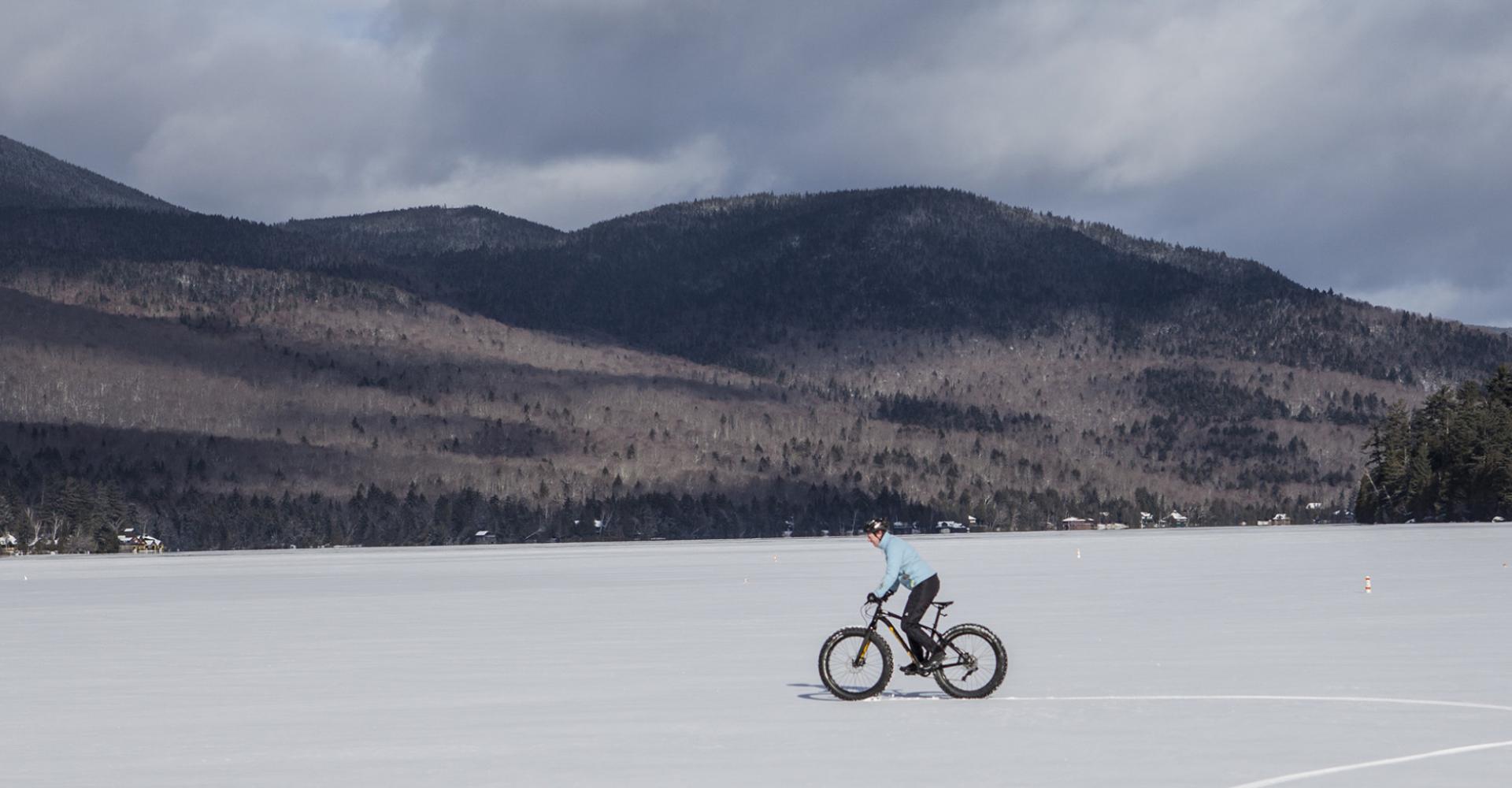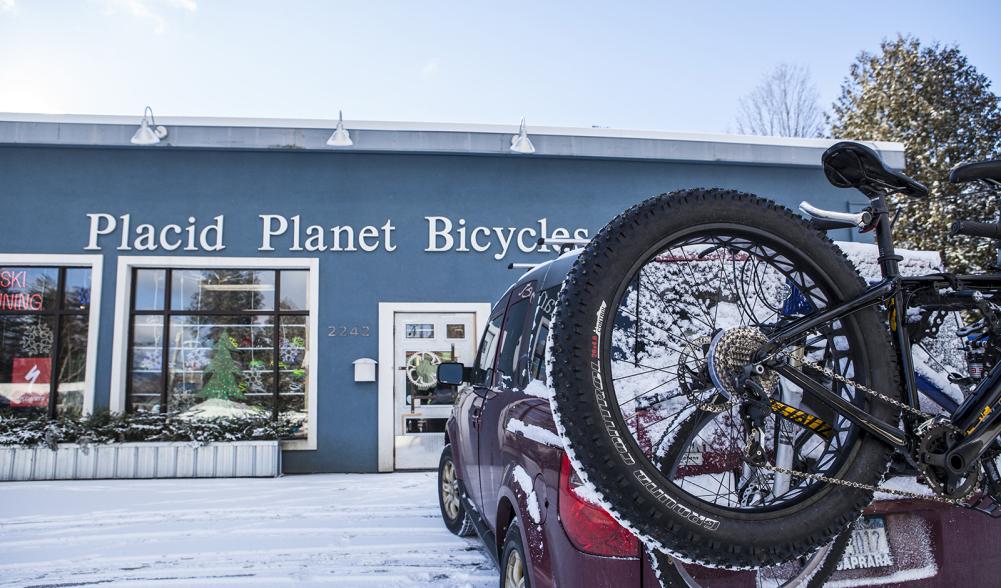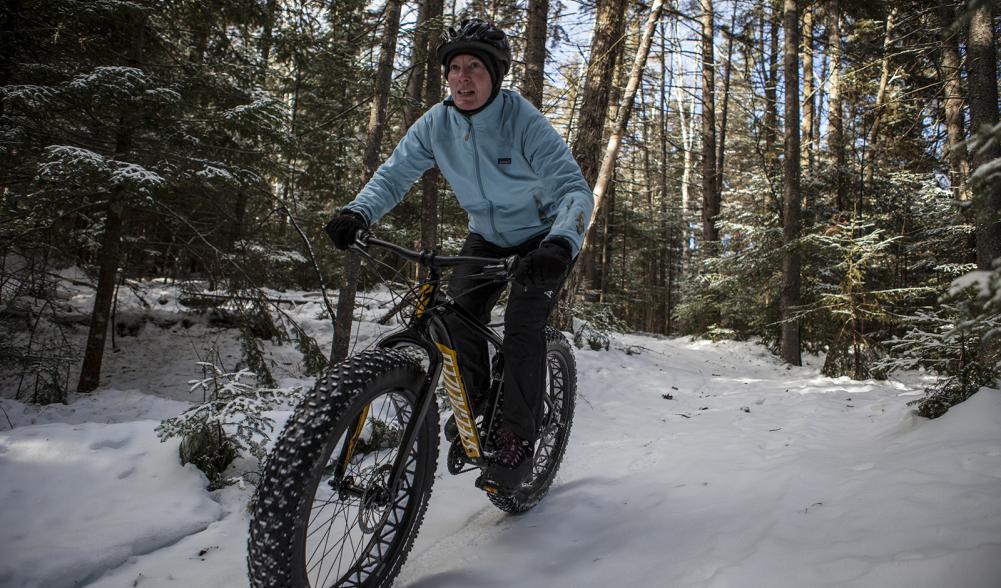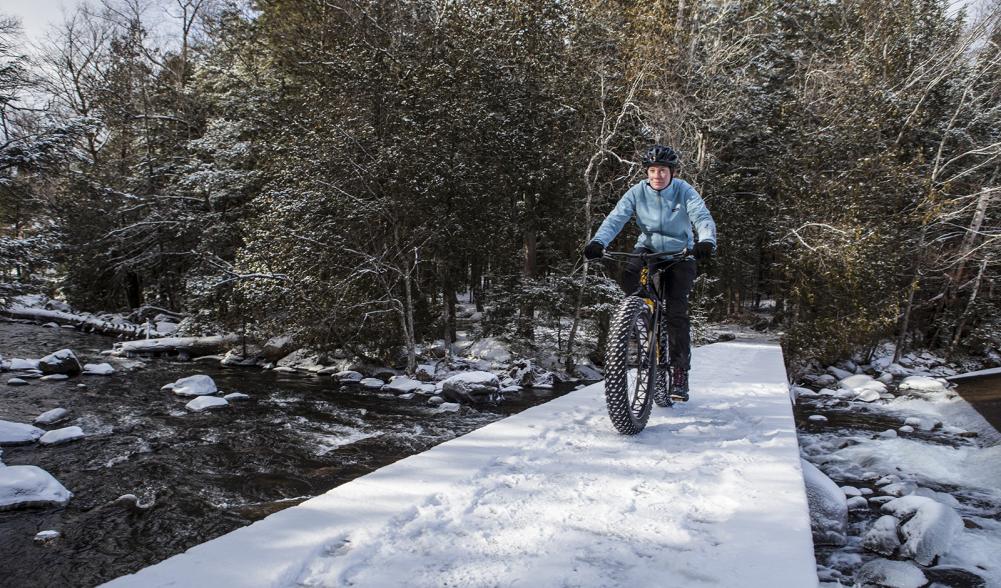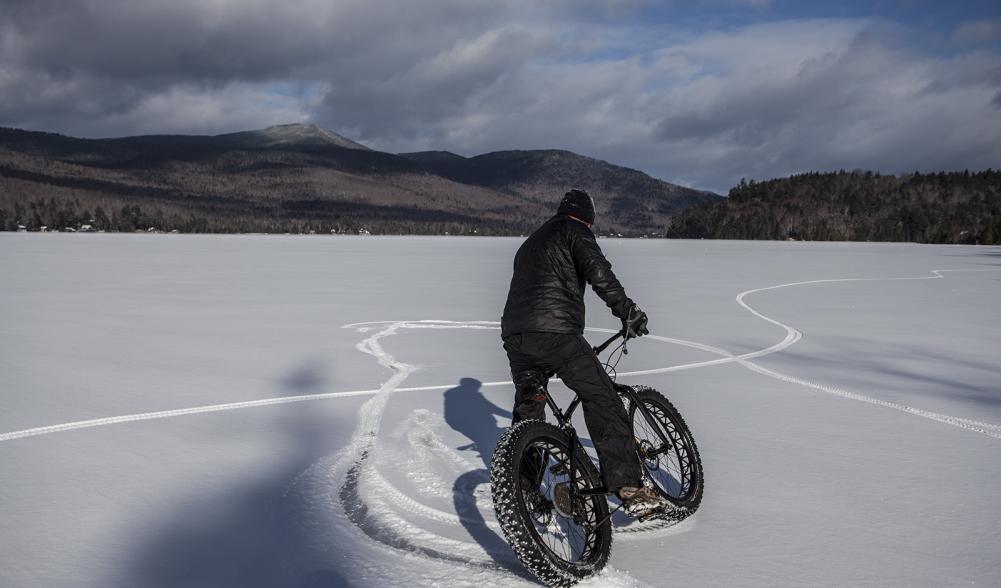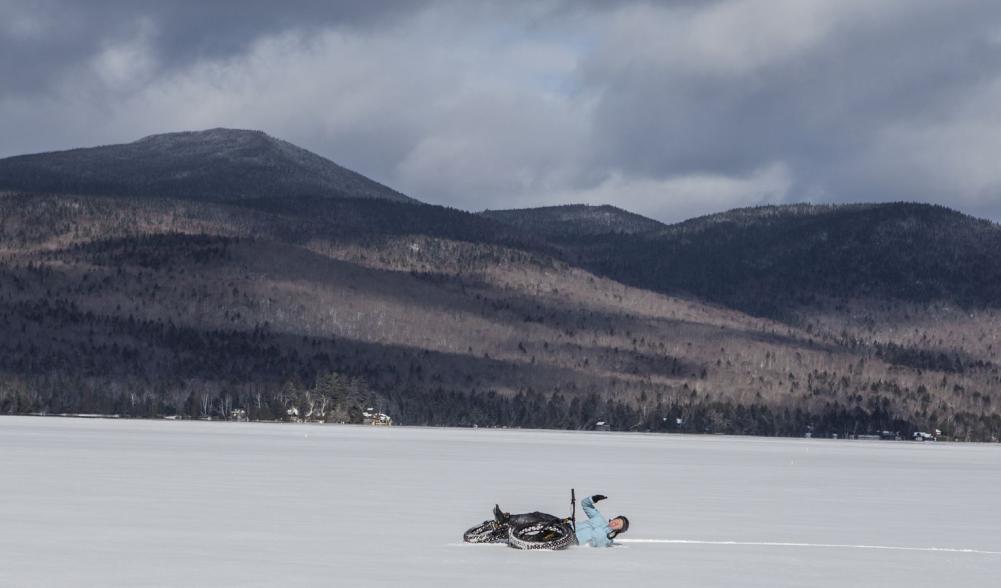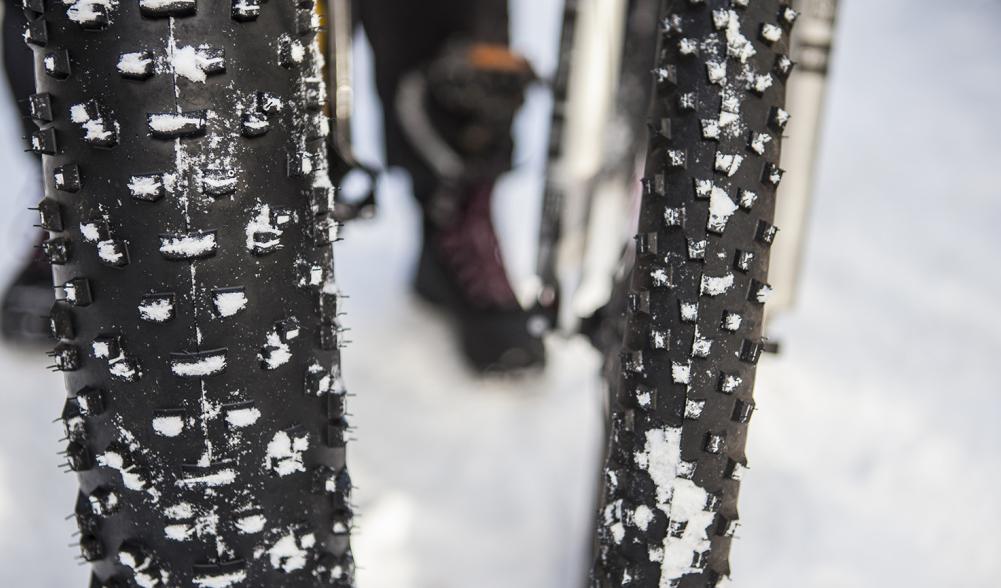I’ve almost always been a fan of two-wheeled contraptions. I remember the very day that it started. I’m not sure how old I was when my father pushed me along for the first time on my training wheel-less bicycle — maybe 5 — but I am sure that once I realized that he had let go at some point, unbeknownst to me, I was hooked. I was RIDING.
Ah, the fun of being a kid, and the freedom that your bicycle provided…
As youngsters, my sister and I would get on our small two-wheelers, and our imaginations would take us on long adventures through foreign lands and motocross races and secret trails. Of course, we were actually “racing” around small imagined loops on our dirt driveway, riding along trails made for snowmobiles in the woods and pedaling through the bumpy, grassy fields near our house.
I had a prized 10-speed bike in high school that I would ride to babysitting gigs and sometimes to school (which was a seemingly LONG 5-mile jaunt). As an adult, I’ve added a now-dated mountain bike with front suspension, a real road bike, and most recently, a motorcycle to my inventory. I figured I was covered for any two-wheeled situation that arose. Until recently.
I had heard of fat bikes a few years ago. My road bike is a Surly, and that brand also makes something called the Pugsly, which is a mountain bike with huge tires that I thought looked rather rugged and a bit awkward in pictures, to be honest.
But I’ve been hearing a lot more about fat bikes of late, so I decided to check this new “fad” out for myself.
To make a long story short, this fad isn’t one, and F-A-T is pronounced “FUN.”
PLACID PLANET
If you’ve ever walked in the door at Placid Planet, you’ll remember that for us bikers it’s like walking into a veritable candy shop for those with a sweet tooth: full of everything BIKES. Triathlon bikes, mountain bikes, road bikes, cruisers, parts, pieces, gear, clothing, helmets and, when I stopped earlier this winter, a fat bike on display right inside the front door.
Kenny Boettger, Placid Planet’s owner and cycling expert, told me that he gets LOTS of inquiries about the fat bikes, and now he’s amassing a fleet of them for rent and sale. Fat Bike is a generic term for these mountain bikes with frames made of different materials, from steel to titanium, that fit really big tires of anywhere from 3-5 inches in diameter. Kenny told me that they've been in the marketplace for quite a while, but other companies are starting to figure out they are a permanent addition to the cycling lineup, not just a fad.
I assumed that fat bikes were great on sandy beaches and on snowy trails — which is true. I’ve come to understand, though, they can also be another mode of both in-town and backcountry transportation, and with the right conditions they can be used year-round to commute as well as to explore the Adirondacks.
I arranged to rent Kenny’s steel-framed Specialized Fat Boy for a day, and he encouraged me to dress like I would for cross-country skiing, with warm boots and especially warm gloves, as that is the most exposed area. He assured me that I’d be warm from pedaling otherwise. He was right about that.
I picked up my rental, planning to try out a couple of different surfaces with this new ride. I brought along my colleague Shaun, a fit outdoorsman and fab photographer, who would ride his regular mountain bike along with me for comparison.
When I rolled the fat bike out to put on the car’s bike rack, my very first impression was how LIGHT the bike seemed. When you look at the frame with its beefy 4.6” tires, your mind tells you that it is heavy. In contrast, I’d wager that this bike, even with its steel frame, is similar in weight to my skinny-tire road bike. We mounted it onto the rack next to Shaun’s regular old mountain bike and headed off.
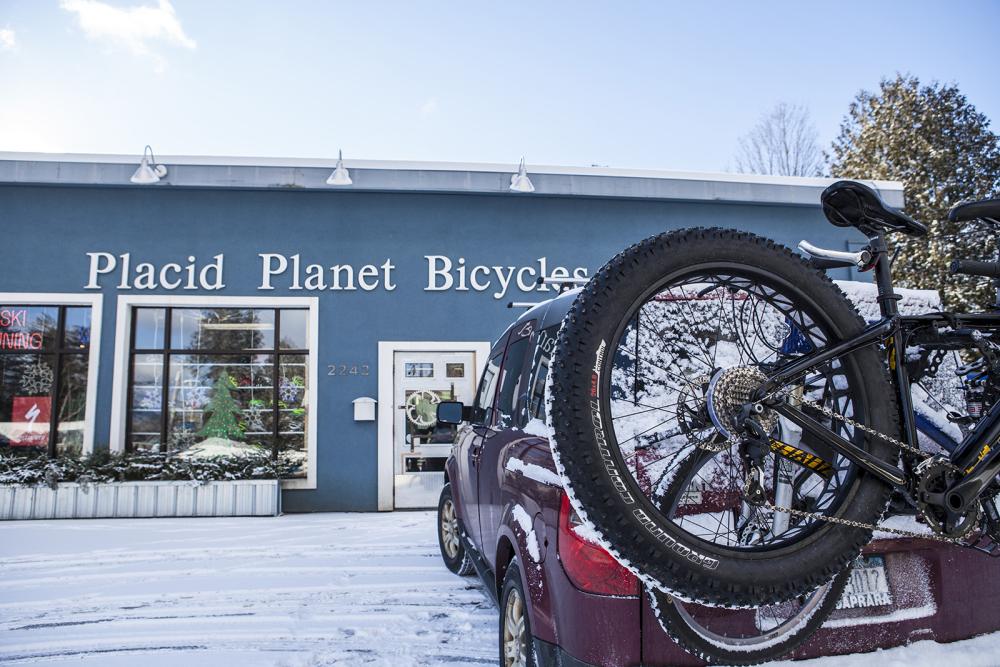
IN SEARCH OF PACKED SNOW
It had been quite warm of late, and the large amount of snow we had accumulated had shrunk down and melted a bit in places. We decided to try first some trails that were protected from the sun, with ample snow remaining that was packed by hikers.
Our first stop was Henry’s Woods in Lake Placid. The rolling trails are very popular with locals for hiking, snowshoeing and cross-country skiing. There were a couple of cars there, but no crowds.
I got on the bike and took a short, slow spin down the road to get accustomed to the gears and the feel of the tires. Shaun followed me soon after with his camera, and told me to venture a bit off the road into the deeper snow on the shoulder. At first I felt like I had less control than with a traditional mountain bike — but it turns out it was all in my head.
I offered Shaun the bike to try out and he immediately headed straight up one of the closest snowbanks — cruising over it easily into the deeper snow and then back over into the road.
OK, so I was being a bit of a milksop. I got back on the fat bike and rode directly up onto a slightly higher snowbank. The bike handled the whole thing easily, and I was in complete control with plenty of traction.
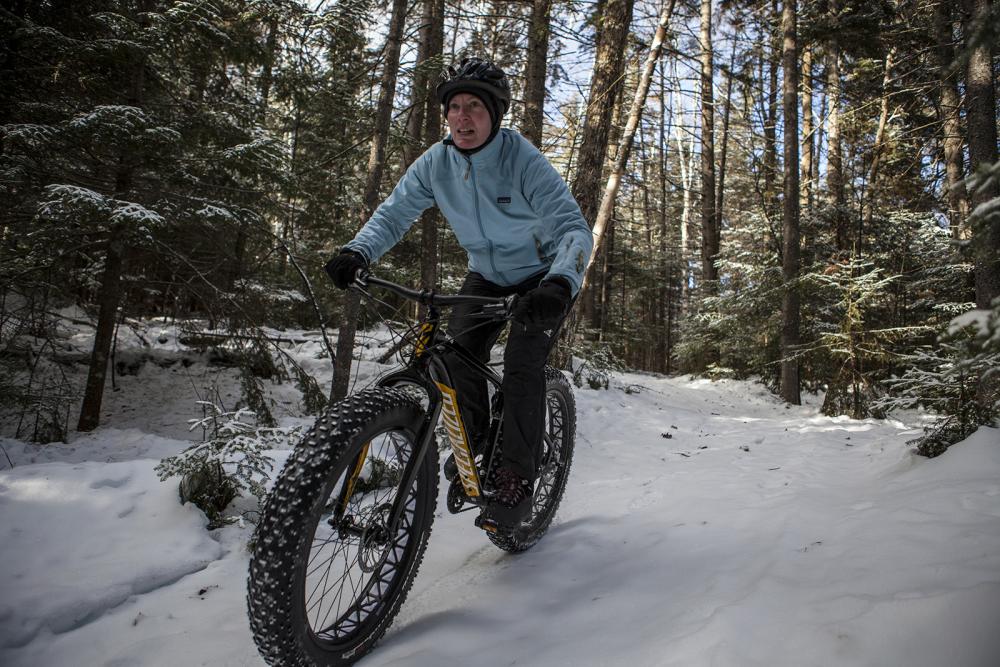
LIKE A KID AGAIN
I shifted into low and we headed up the trail. Almost immediately, much like on my regular mountain bike, I felt like a kid again. This was FUN. The packed snow was a terrific surface for the fat tires. As we gained elevation there were a couple of spots in which the vertical angle had me standing up to pedal — I’m not in that great of aerobic shape, it seems. But I did notice a little bit of slipping with the back tire, which forced me to sit on the seat to make sure that there was sufficient weight on the back tire for traction.
We passed a couple with their dog, and they were clearly very jealous of my bike, smiling and admiring the huge tires. (Either jealous, or simply entertained by my big goofy smile.)
We tried a couple of the trails and took some pictures, and while Shaun followed me back down with his camera in one hand and his other hand operating his handlebar, I cruised too fast right out of his sight and back down to the car. Like a kid. FUN.
ICE, ICE BABY
We decided to check out another family fun favorite trail system, the Peninsula Trails. As was the case at Henry’s Woods, since this was a weekday, we hoped the trails would be largely empty. We had been warned, however, by Kenny and others that the recent weather had rendered the trails a bit icy. And without studded tires, ice isn’t a friend of any bike.
Sure enough, the trail was icy, but with enough snow on top for us to ride. We decided just to travel to the dam at the lake and loop back. At one point, Shaun’s bike slid out to the side and he caught himself before completely falling. The bigger tires of the fat bike seemed to be more forgiving even on the ice (plus I had ample warning about the slick spots as I was following him :). As we got closer to the dam, there were a few hikers just departing. They also marveled at my fat bike, but they were marveling in German, I believe, so I’m not quite sure what their comments meant.
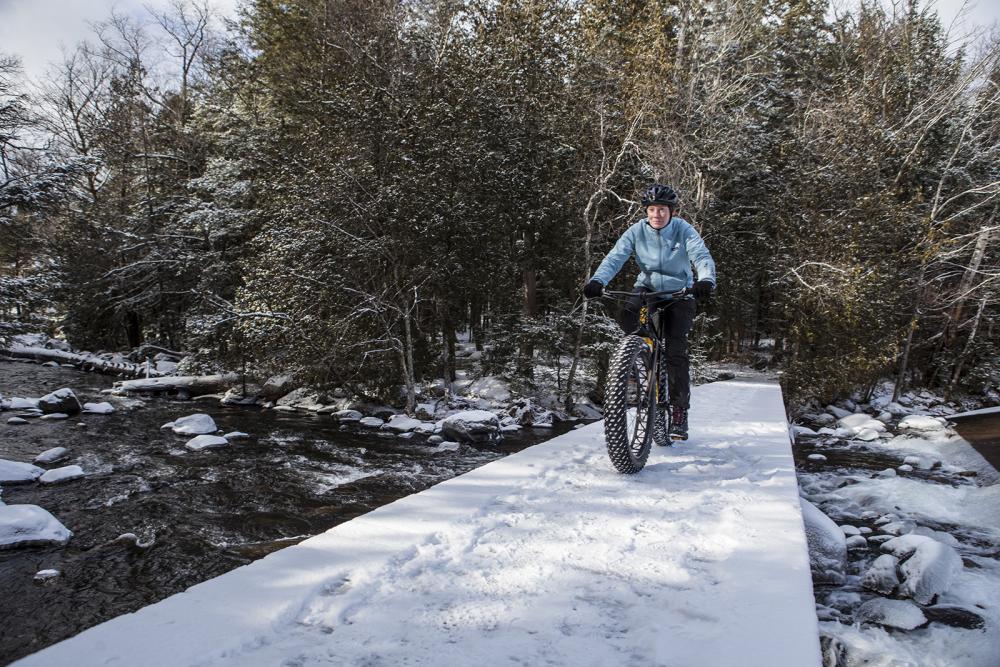
We stopped at the dam, and I rode the fat bike across the snow-covered, narrow bridge. There was ice on the other side, so I turned around. I parked the bike next to a stump and we surveyed the view of Lake Placid.
At the dam, of course, there was open water. But further out, there was snow-covered ice as far as we could see. We walked around along the shore, away from the dam, and tested the ice. It was thick. We decided to move out onto the ice and perhaps ride on the thin snowpack out in the open.
We deemed the ice safe enough and I got back on the bike and headed out to do a circle. Slowly. I could tell that the snow was less than 2 inches thick, so I didn’t try any abrupt moves. I just pedaled along, taking a wide turn back toward Shaun. Success! It was fun to be out on the lake, making fresh, fat tracks.
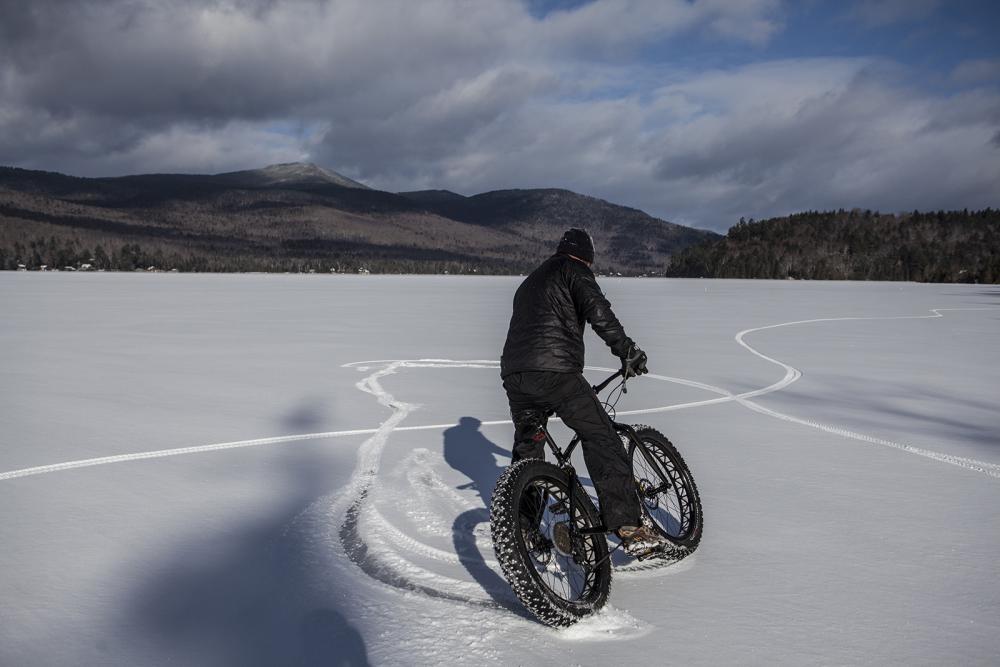
Shaun took a turn on the fat bike, skidding purposely to a stop at the end of a loop. That looked easy, so I went back out for just one. more. loop. Yeah, I tested the limits of this particular surface — which is hard, by the way. The ice was very… solid.
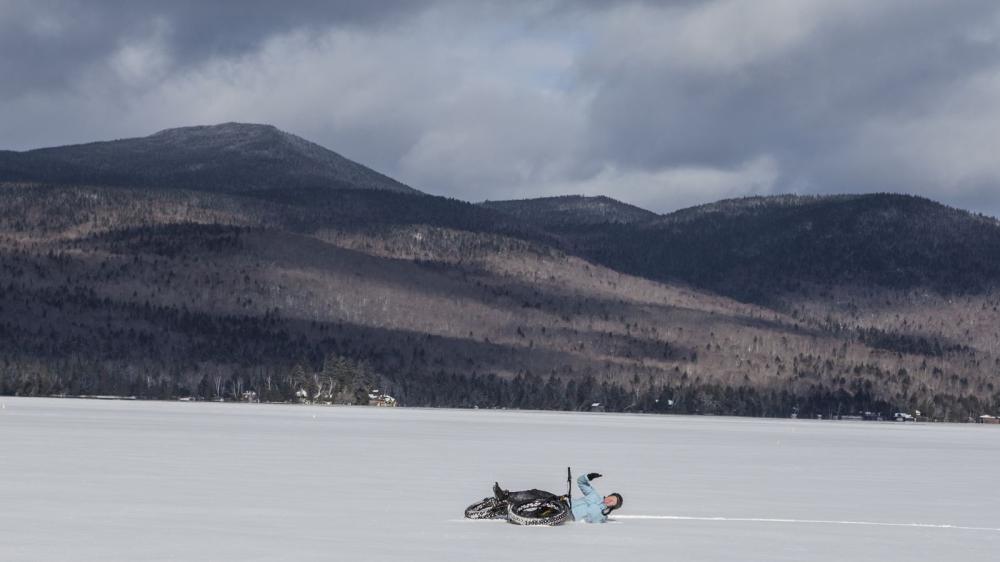
That was enough of a test run, we decided. We rode all the way back out to the car along the snow-covered icy trail. This time it seemed easier to ride, perhaps as compared to the lake surface. Most of the short uphill sections were easily ridden on the fat bike — I was starting to get the hang of this thing.
Regardless of my learning curve, I’d have to apply my newfound skills another time. We loaded up the bikes and I reluctantly returned the rental to its home.
PHYSICS
Speaking of learning, I wanted to get a little bit more info on the fat tire technology. Though as the nuances of the fat bike are explained they make complete sense, riding one helped me to fully grasp the advantages of the bigger tire size.
I talked with Shane Kramer on Kenny’s recommendation. Shane owns a fat bike and he rides it year round. He agrees with me about it being fun — “riding it is like being a kid again.” See, I’m not making this stuff up.
Shane explained to me that aside from the pure amount of tire surface that is touching the ground, it is the tire pressure that really makes these bikes so stable, yet nimble. A car tire, remember, has an average tire pressure of around 30 PSI, or pounds per square inch. A road bike, with the skinny tires, has a PSI of 100 to 125, and mountain bikes range between 25 and 60 PSI.
In comparison, fat bike tires typically run at less than 10 PSI.
This lower tire pressure does a couple of things: It makes them bouncier, sometimes giving as much as 2 inches of “travel,” such as you’d get with suspension. And it ensures that a greater amount of the tire is actually grabbing onto the surface you’re riding, providing greater traction. Once I understood that “by feel” when I test rode, and trusted that traction, it was certainly an effective setup, and I had a great deal of control.
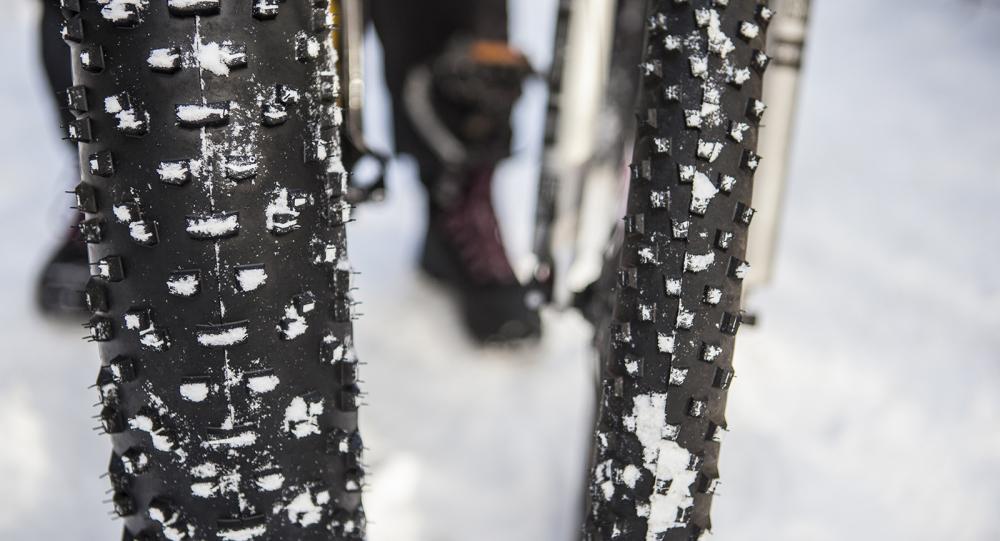
Fat bikes can be made from a variety of materials, including steel (like the bike I tested), aluminum, titanium, or carbon fiber, and they typically have disc brakes. You can find them with or without front and rear suspension, and in single-speed and multi-gear models. I liked the setup on the one I tried, with typical mountain bike gearing, no suspension and grip shifters.
That’s why fat bikes have an advantage on climbs with poor traction, slippery roots or loose surfaces. You simply roll over rough terrain (or snow banks, in my case). Seems perfect for the Adirondacks!
IN CONCLUSION - (OR CONCUSSION)
Sorry, did I mention that the ice on the lake was… solid? (Always wear your helmet!)
In doing some research, it seems the fat “fad” really is becoming more mainstream, and available in other parts of the Adirondack High Peaks, too.
For example, from Lake Placid’s Placid Planet and High Peaks Cyclery to Keene’s Leepoff Cycles, these fat bikes are already part of the mountain bike inventory of most shops.
It’s also possible to take a guided fat bike excursion. I spoke with Dave Olbert of Cloudsplitter Outfitters in Newcomb, who currently leads guided fat bike tours into Great Camp Santanoni. He and his wife are in the process of transitioning to a new business called the Newcomb Guide Service and, once a few hurdles have been jumped, they plan to expand the use of the fat bikes on existing snowmobile trails to Indian Lake.
So as Kenny suggested, it’s good to prepare properly for any winter sport with appropriate warm clothing and safety gear, such as a helmet. And though the fat bikes make traction and control easier in many ways, it is also a pretty good workout, requiring more effort to push through snowbanks or sand. So plan your intended distance accordingly!
As far as my own 2-wheeler inventory, we’re considering whether my outdated old mountain bike needs replacement.
…A FUN replacement that makes me feel like a kid again? Perhaps!
-Kim Rielly is the director of communications for the Regional Office of Sustainable Tourism

